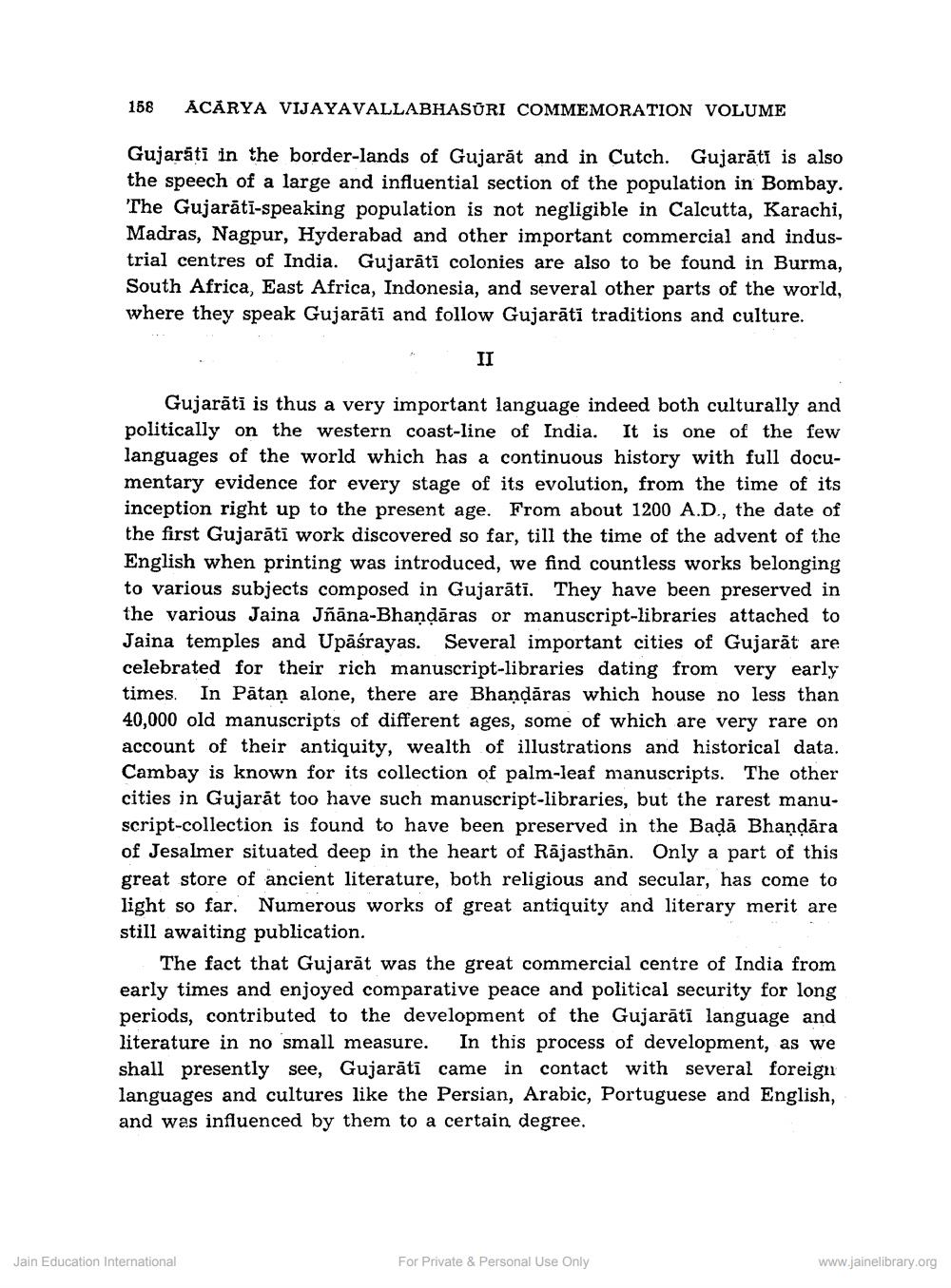Book Title: Historical Outline of the Languages of Western Indian Author(s): K B Vyas Publisher: Z_Vijay_Vallabh_suri_Smarak_Granth_012060.pdf View full book textPage 2
________________ 158 ACĂRYA VIJAYAVALLABHASŪRI COMMEMORATION VOLUME Gujarati in the border-lands of Gujarăt and in Cutch. Gujarāti is also the speech of a large and influential section of the population in Bombay. The Gujarātī-speaking population is not negligible in Calcutta, Karachi, Madras, Nagpur, Hyderabad and other important commercial and industrial centres of India. Gujarāti colonies are also to be found in Burma, South Africa, East Africa, Indonesia, and several other parts of the world, where they speak Gujarātī and follow Gujarāti traditions and culture. II Gujarātī is thus a very important language indeed both culturally and politically on the western coast-line of India. It is one of the few languages of the world which has a continuous history with full documentary evidence for every stage of its evolution, from the time of its inception right up to the present age. From about 1200 A.D., the date of the first Gujarāti work discovered so far, till the time of the advent of the English when printing was introduced, we find countless works belonging to various subjects composed in Gujarāti. They have been preserved in the various Jaina Jñāna-Bhandāras or manuscript-libraries attached to Jaina temples and Upāśrayas. Several important cities of Gujarāt are celebrated for their rich manuscript-libraries dating from very early times. In Pātan alone, there are Bhandāras which house no less than 40,000 old manuscripts of different ages, some of which are very rare on account of their antiquity, wealth of illustrations and historical data. Cambay is known for its collection of palm-leaf manuscripts. The other cities in Gujarāt too have such manuscript-libraries, but the rarest manuscript-collection is found to have been preserved in the Badā Bhandāra of Jesalmer situated deep in the heart of Rajasthān. Only a part of this great store of ancient literature, both religious and secular, has come to light so far. Numerous works of great antiquity and literary merit are still awaiting publication. The fact that Gujarāt was the great commercial centre of India from early times and enjoyed comparative peace and political security for long periods, contributed to the development of the Gujarāti language and literature in no small measure. In this process of development, as we shall presently see, Gujarāti came in contact with several foreign languages and cultures like the Persian, Arabic, Portuguese and English, and was influenced by them to a certain degree, Jain Education International For Private & Personal Use Only www.jainelibrary.orgPage Navigation
1 2 3 4 5 6 7 8 9 10 11 12
